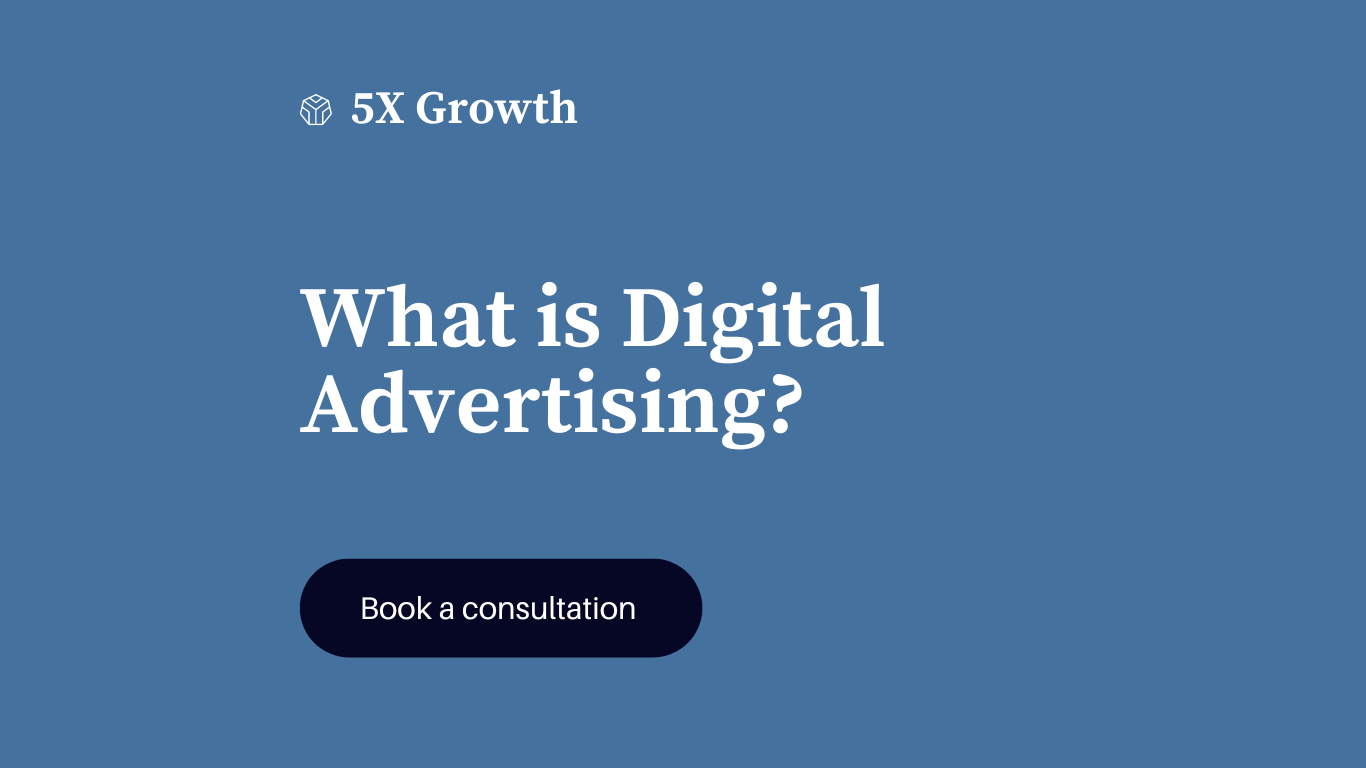In today's advanced age, businesses ought to adjust to unused advances to stay competitive within…
What is SEO: A Comprehensive Guide

What is SEO?
Some people mix SEO with PPC, but these two things are different. In this article, we will learn what SEO is and why you should use it. SEO stands for Search Engine Optimization. It is the practice of optimizing a website or web content to increase its visibility in search engine results pages (SERPs), particularly on Google, Bing, and other search engines. The goal of SEO is to improve a website’s organic (non-paid) search rankings, drive more traffic to the site, and ultimately increase conversions or sales.
Why is SEO Important?
SEO is crucial for businesses as it increases visibility, drives targeted traffic, and improves online presence. Optimizing web content for search engines leads to higher rankings on SERPs, attracting potential customers. By using relevant keywords and strategic implementation, SEO draws in interested users for better engagement and conversion rates. In a competitive online market, an effective SEO strategy is essential for standing out, building credibility, and achieving long-term success.
Keyword Research
Keyword research is a fundamental aspect of SEO, as it involves identifying and analyzing the specific terms and phrases that users are likely to search for when looking for products or services similar to what a business offers. To create targeted content, businesses must understand potential customers’ search patterns and language. Keyword research tools provide insights into volume, competition, and trends, allowing marketers to incorporate relevant keywords into content. Effective keyword research improves visibility in SERPs and enhances the user experience.
Importance of Keywords
Keywords are essential for effective SEO and content strategies, improving visibility in SERPs and reaching a wider audience. They bridge user intent and website content, aligning with potential customer needs. Strategic keyword use aids search engines in understanding and categorizing content, leading to better indexing and higher rankings. Proper implementation of keywords drives targeted traffic, increases engagement, and ensures long-term success.
How to Perform Keyword Research
Keyword research is critical for successful SEO, identifying relevant terms for content. Understand the target audience and brainstorm keywords. Use tools like Google Keyword Planner, Ahrefs, or SEMrush to gather data on search volume, competition, and difficulty. Analyze competitors’ keyword usage for opportunities and ensure relevance to offerings and user intent. Organize your keywords into logical groups or categories to create a structured approach to optimization and content creation.
Here’s a step-by-step guide to conducting keyword research:
- Understand your target audience: Begin by gaining a clear understanding of your target audience, their needs, preferences, and the language they use when searching for products or services similar to yours.
- Brainstorm ideas: Create a list of potential keywords by brainstorming ideas related to your business, products, or services. Consider using synonyms, variations, and long-tail keywords (longer, more specific phrases) to expand your list.
- Use keyword research tools: Leverage keyword research tools such as Google Keyword Planner, Ahrefs, SEMrush, or Moz Keyword Explorer to analyze your list of potential keywords. These tools provide valuable data on search volume, competition, and keyword difficulty, allowing you to prioritize your keyword selection.
- Analyze competitors: Identify and analyze the keywords used by your competitors to understand what works for them and uncover potential keyword opportunities that you may have missed.
- Focus on relevance and intent: Ensure that the keywords you select align with the intent of your target audience and are relevant to your content or offerings. This will lead to higher user satisfaction and better conversion rates.
- Group and categorize keywords: Organize your keywords into logical groups or categories to create a more structured and manageable keyword strategy. This will also help you optimize different sections of your website or create targeted content for each group.
- Monitor and adjust: Continuously monitor your website’s performance using analytics tools such as Google Analytics or other third-party

On-Page SEO
On-page SEO refers to the optimization of individual web pages to improve their search engine rankings and increase the visibility of the website. This involves optimizing various elements of the page, including content, HTML source code, meta tags, headings, and URLs. On-page SEO’s primary goal is to ensure easy understanding of page content and structure by search engines and users. Relevant keywords, high-quality content, optimized titles and descriptions, and proper header tags enhance on-page SEO, providing a better user experience. This leads to higher rankings and increased organic traffic.
Optimizing Content
Optimizing content is the process of improving website content to increase its relevance, value, and visibility for both users and search engines. It involves creating high-quality, engaging material, strategically incorporating relevant keywords, and using proper formatting, headings, and meta tags. This ensures better user experience and improved search engine rankings, ultimately leading to increased organic traffic.
Creating Quality Content
Creating quality content involves producing unique, informative, and engaging material that caters to your target audience’s needs and interests. This process includes understanding your audience, focusing on relevance, using clear language, incorporating visuals, structuring content, optimizing for SEO, and updating regularly. Quality content fosters user engagement and improves search engine rankings, leading to increased visibility and organic traffic.
To create quality content, follow these 10 steps:
- Understand your audience: Research and identify your target audience’s preferences, pain points, and questions to tailor your content accordingly.
- Focus on relevance: Ensure your content is relevant to your niche and provides valuable information or solutions to your audience’s needs.
- Be original: Create unique and original content that sets you apart from competitors and showcases your expertise in the subject matter.
- Use clear language: Write in a clear, concise, and easy-to-understand manner, making your content accessible to a wider audience.
- Incorporate visuals: Use images, videos, and infographics to support your content, enhance user engagement, and improve readability.
- Structure your content: Use proper headings, subheadings, and formatting to make your content easy to skim and navigate.
- Optimize for SEO: Strategically incorporate relevant keywords, use appropriate meta tags, and follow on-page SEO best practices to improve your content’s search engine visibility.
- Update regularly: Keep your content fresh and up-to-date to maintain its relevance and ensure it continues to provide value to your audience.
- Encourage engagement: Invite feedback, comments, and discussions to foster a sense of community and encourage interaction with your content.
- Measure success: Use analytics tools to track your content’s performance and make data-driven adjustments to improve its effectiveness over time.
Using Keywords Properly
Proper keyword usage involves strategically including relevant terms in your content to improve search engine visibility and relevance. This means incorporating keywords in titles, headings, meta descriptions, and throughout the text while maintaining a natural flow. Using keyword variations and long-tail keywords can capture a wider range of user searches and enhance content effectiveness.
To use keywords effectively, follow these 7 steps:
- Conduct keyword research: Identify relevant and high-performing keywords related to your topic, using tools like Google Keyword Planner, Ahrefs, or SEMrush.
- Focus on user intent: Choose keywords that align with the search intent of your target audience to ensure your content addresses their needs and interests.
- Maintain natural flow: Incorporate keywords organically into your content without disrupting the flow or readability. Avoid keyword stuffing, which can lead to poor user experience and search engine penalties.
- Utilize keyword variations: Use synonyms, plurals, and variations of your main keywords to capture a broader range of search queries and avoid keyword repetition.
- Target long-tail keywords: Long-tail keywords are longer, more specific phrases with lower search volume but higher conversion potential. Targeting these can help you reach a more engaged audience.
- Optimize key elements: Place your main keywords in crucial areas like the title, headings, meta description, and URL to enhance your content’s search engine visibility.
- Monitor keyword performance: Regularly track the performance of your chosen keywords using analytics tools and adjust your strategy accordingly to maintain and improve your rankings.
Meta Tags, Headers, and URLs
On-page SEO comprises of several key components that aid in optimizing your website for search engines. Title tags and meta descriptions are brief summaries of webpage content that influence click-through rates from SERPs. Headers and URLs also provide additional context for search engines and easier navigation for users in on-page SEO.
By optimizing these elements, you can improve your website’s visibility and attract more organic traffic from search engines. Headers structure content for easy navigation, while optimized URLs enhance user experience and search engine rankings. Together, these elements contribute to better on-page SEO and increased website visibility.

Off-Page SEO
Off-page SEO refers to optimization techniques that take place outside of your website to improve its search engine rankings and visibility. It primarily focuses on building your website’s credibility and authority through backlinks, which are incoming links from other reputable websites. Off-page SEO also includes strategies like social media marketing, content marketing, influencer outreach, and online reputation management. These efforts help establish your website as a trustworthy and valuable resource, leading to higher search engine rankings and increased organic traffic.
Link Building
Link building is a fundamental aspect of off-page SEO that involves acquiring backlinks from other websites to your own. Backlinks are “votes of confidence” from other sites, indicating valuable and trustworthy content. High-quality backlinks involve creating engaging content, reaching out to influencers and leveraging social media to promote content. Avoid unethical practices like buying links or link farms, leading to search engine penalties and damage to website reputation. Strong and diverse backlink profiles significantly improve search engine rankings and drive organic traffic.
Why Link Building Matters
Link building is crucial for off-page SEO, establishing website credibility, authority, and trustworthiness. Backlinks are considered “votes of confidence” from other sites, indicating valuable content. Quality and quantity of backlinks are major factors in search engine rankings, with high-quality links having a greater impact. Link building also increases referral traffic from other websites, leading to more potential customers and higher conversion rates. In essence, link building is a vital tool for improving your website’s visibility and driving more organic traffic, making it an essential part of any effective SEO strategy.
Effective Link-Building Strategies
Acquiring high-quality backlinks from reputable and relevant sources is key to effective link-building strategies. These strategies include creating shareable content, guest posting, collaborating with influencers, participating in online communities, and leveraging social media. Conducting thorough research and building relationships with relevant and authoritative websites is crucial. However, avoid unethical practices like buying links or participating in link farms, as they can result in penalties and damage your reputation. Well-executed link-building can improve search engine rankings, drive traffic, and establish credibility.
Here are some effective link-building strategies:
- Create high-quality content: Focus on creating high-quality, informative, and engaging content that other websites will want to link to.
- Guest post on other websites: Reach out to reputable websites in your niche and offer to create guest posts with backlinks to your site.
- Collaborate with influencers and bloggers: Build relationships with influencers and bloggers in your industry and collaborate on content or campaigns that include backlinks to your site.
- Participate in online communities: Join relevant online communities and forums to engage with your target audience and include links to your site where appropriate.
- Leverage social media platforms: Use social media to promote your content and engage with potential link partners and influencers.
- Research and outreach: Identify relevant and authoritative websites within your niche and reach out to their owners or editors to establish a relationship and request backlinks.
- Monitor and adjust: Continuously monitor your backlink profile using tools like Ahrefs, Moz, or SEMrush and adjust your link-building strategy as needed to maintain a diverse and high-quality link profile.

Social Media and SEO
The relationship between social media and SEO is strong, as social media can have a significant impact on your website’s search engine rankings. Social media platforms offer a valuable opportunity to promote your content, engage with your audience, and generate backlinks to your website. Social media activity can signal content relevance to search engines, potentially improving rankings. Additionally, social media profiles and content can rank on search engine results pages, increasing your brand’s visibility and reach. Integrated social media improves website rankings and organic traffic.
Role of Social Media in SEO
Social media can indirectly influence your SEO efforts. Although social signals (likes, shares, comments, etc.) are not direct ranking factors, they can increase your website’s visibility, leading to more inbound links and higher organic traffic.
Here are some ways social media can contribute to your SEO:
- Content promotion: Social media provides a platform to promote your content, increasing its visibility and reach.
- Backlinks: Social media activity can generate backlinks to your site, improving your website’s authority and search engine rankings.
- Brand visibility: Social media profiles and content can rank on search engine results pages, increasing your brand’s visibility and reach.
- Engagement signals: Social media activity, such as likes, shares, and comments, can indicate to search engines that your content is valuable and relevant to your audience, potentially improving your website’s search engine rankings.
- Social signals: The number of social media followers and likes can also be considered as social signals, indicating the popularity and authority of your brand.
Leveraging Social Media for SEO
Using social media to boost SEO involves promoting content, building backlinks, maintaining a social media presence, generating social signals, and optimizing profiles. This increases website authority, reputation, and visibility, resulting in more organic traffic.
Technical SEO
Impact on User Experience and Rankings
User experience (UX) and search engine rankings are closely related. Good user experience (fast loading, easy navigation, engaging content) leads to better engagement, conversions, and search engine rankings. A bad user experience (slow loading, confusing navigation, low-quality content) results in higher bounce rates, lower engagement, and decreased rankings. Prioritizing user experience is crucial for success, as it impacts search engine rankings and performance.
How to Improve Site Speed
To improve your website’s speed, optimize images, leverage browser caching, minimize HTTP requests, and utilize content delivery networks (CDNs). You can also use tools like Google PageSpeed Insights and GTmetrix to analyze your site’s speed and receive recommendations for improvement.
Here are some ways to improve site speed:
- Optimize images: Compress and optimize images to reduce their file size without sacrificing quality.
- Minimize HTTP requests: Reduce the number of HTTP requests by combining or minifying CSS and JavaScript files.
- Use a content delivery network (CDN): Utilize a CDN to distribute your website’s content across multiple servers, improving loading times for users.
- Enable caching: Enable browser caching to store frequently accessed resources on the user’s device, reducing the need to fetch them from the server.
- Minimize redirects: Minimize the number of redirects on your site, as each redirect adds time to the loading process.
- Reduce server response time: Optimize server response time by using a high-quality hosting service and reducing the amount of code and plugins on your site.
- Prioritize above-the-fold content: Load above-the-fold content first to provide users with a faster initial loading experience.

Mobile-Friendliness
A mobile-friendly website is crucial for a positive user experience and better search engine rankings. It should have a responsive design, fast loading times, easy navigation, and optimized content. With mobile devices being the primary method for internet access, having a mobile-friendly site is essential. Google’s mobile-first policy requires mobile-friendly sites for better rankings and user experience.
Optimizing for Mobile Devices
- Responsive design: Use responsive design for a seamless user experience on any device.
- Fast loading times: Optimize your website’s loading times by compressing images, minimizing HTTP requests, and enabling caching.
- Easy-to-use navigation: Simplify your website’s navigation for mobile devices by using clear menus and calls-to-action.
- Mobile-friendly content: optimized for mobile devices, improves user experience and search engine rankings.
- Optimize content for mobile: clear headings, easy-to-read text, and appropriate font sizes.
- Avoid pop-ups: Avoid using pop-ups that can be difficult to close on mobile devices, as this can negatively impact the user experience.
- Use mobile-friendly plugins: Use plugins that are optimized for mobile devices to improve functionality and user experience.
- Test on multiple devices: Test your website on multiple mobile devices to ensure that it displays properly and provides a positive user experience.
Conclusion
SEO is crucial for digital marketing, optimizing website search engine rankings, driving organic traffic, and increasing conversions. Comprehensive SEO strategies include on-page and off-page optimization techniques like keyword research, content optimization, link building, social media, and user experience. Prioritizing SEO establishes brand credibility and authority, reaches potential customers, and drives revenue. Following best practices and industry trends ensure website visibility and competitiveness in search engine rankings.
FAQs
How long does it take to see results from SEO?
The time it takes to see results from SEO varies depending on factors like your website’s age, competition, and the quality of your SEO efforts. Generally, it can take anywhere from a few weeks to several months or even longer to see significant improvements in rankings and organic traffic.
Is SEO a one-time process or an ongoing effort?
SEO is an ongoing effort, as search engine algorithms and user behavior constantly evolve. To maintain and improve your website’s rankings, it’s essential to monitor your website’s performance, update your content, and adjust your SEO strategies as needed.
Can I do SEO myself or should I hire an expert?
While it’s possible to learn and implement SEO strategies yourself, hiring an expert can save you time and ensure that your efforts are effective. If you have the budget and want to focus on other aspects of your business, consider hiring an SEO professional.
What are some common SEO mistakes to avoid?
Common SEO mistakes to avoid include keyword stuffing, ignoring technical SEO, focusing solely on search engines instead of users, and not tracking your website’s performance. Prioritizing quality content, a user-friendly website, and proper optimization techniques will help you avoid these pitfalls.
How important is content for SEO?
Content is crucial for SEO, as it’s the primary means through which search engines understand and rank your website. High-quality, relevant, and engaging content can attract more organic traffic, improve user experience, and lead to higher search engine rankings. Focus on creating content that addresses your target audience’s needs, answers their questions, and provides valuable information.


